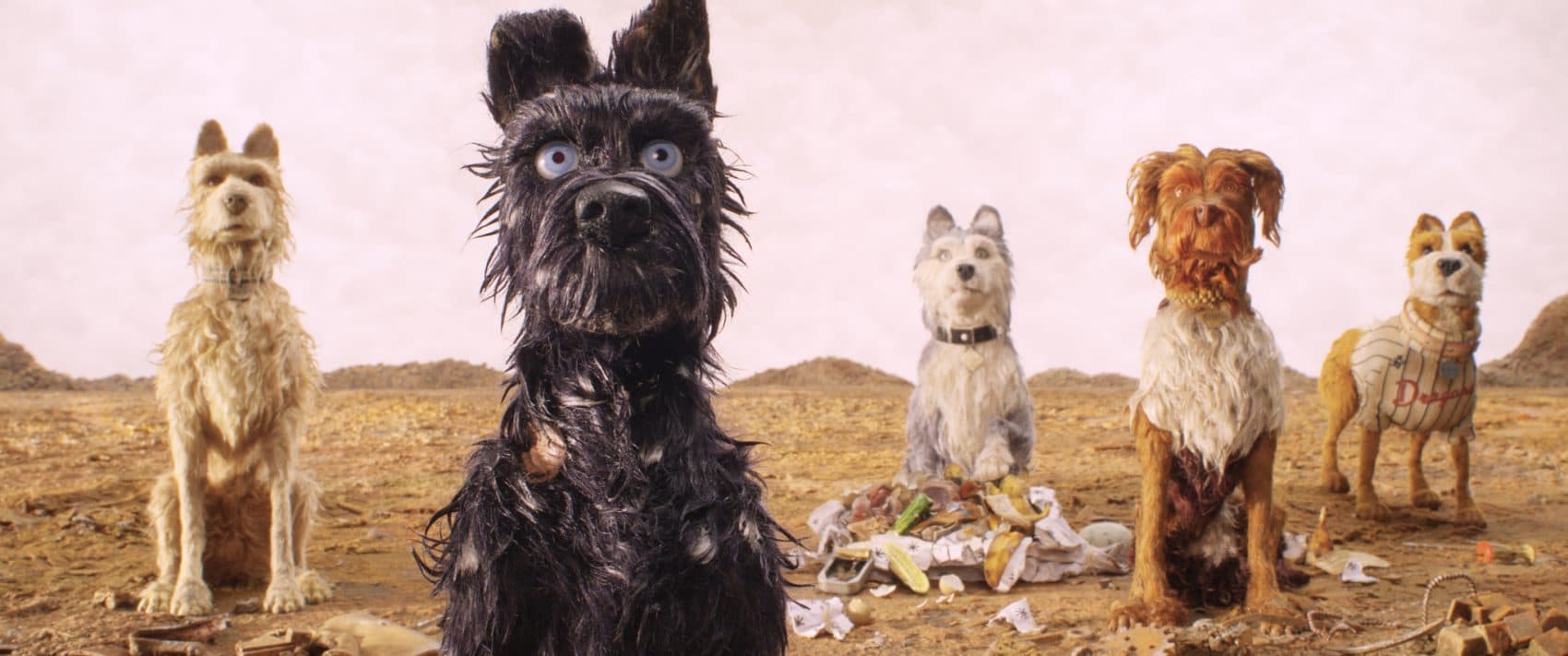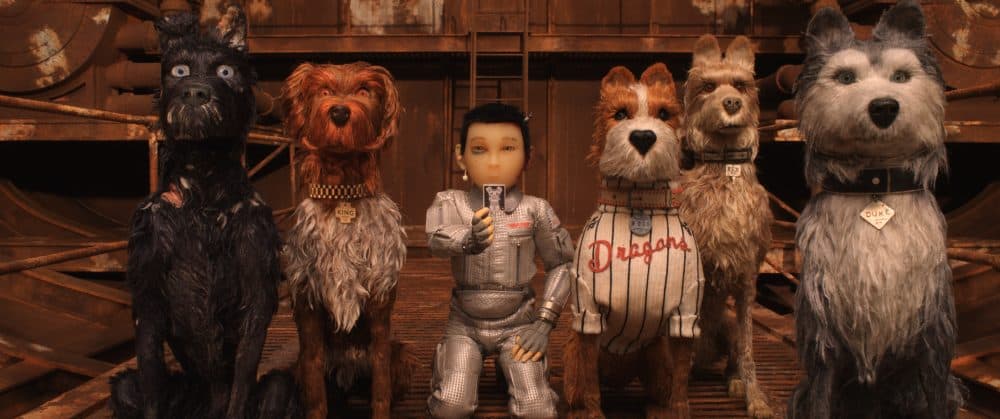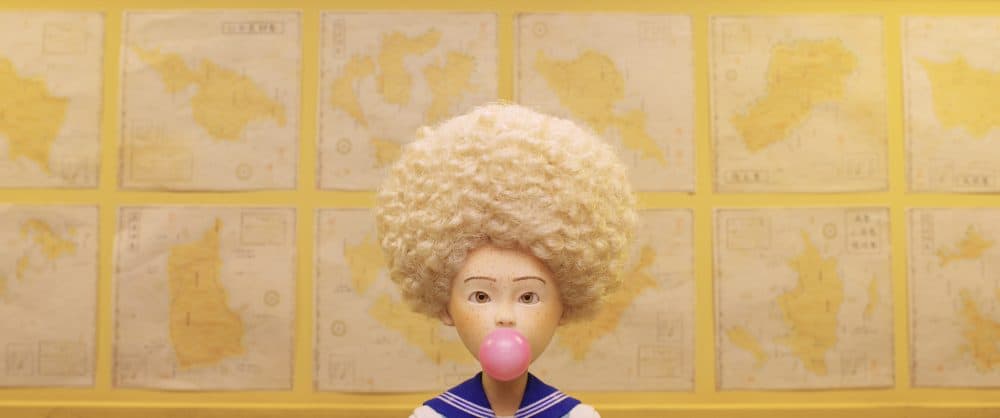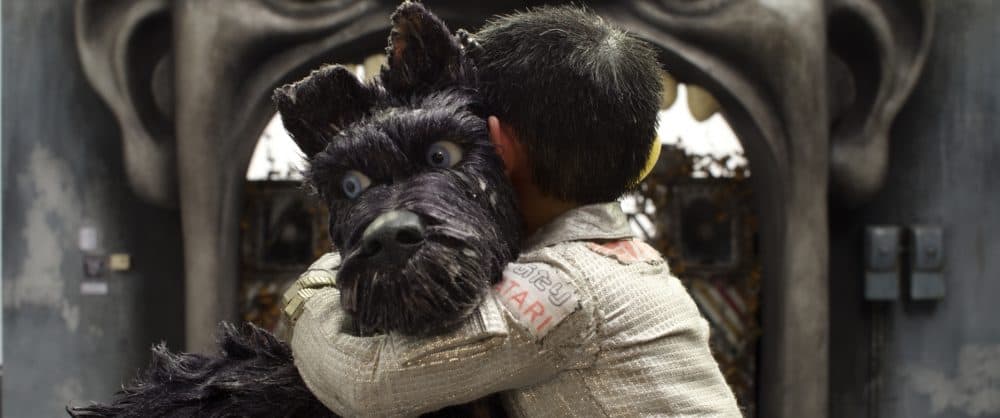Advertisement
Review
With Stunning Visuals, Wes Anderson’s 'Isle Of Dogs' Delivers A Melancholy Strain Of Whimsy

Wes Anderson movies are already such exactingly micro-designed miniatures, it’s a wonder he doesn’t use stop-motion animation for all of them.
Over the 20-odd years since “Bottle Rocket,” Wes’s World has become an increasingly meticulous construction, crawling up its own artifice with results both wondrous (2012’s “Moonrise Kingdom”) and asphyxiating (2014’s “The Grand Budapest Hotel.”) Like his 2009 triumph “Fantastic Mr. Fox,” Anderson’s “Isle of Dogs” is an animated animal adventure replacing actors with fuzzy puppets manipulated 24 times or so per second, conjuring a strange simulacrum of life that suits this very particular filmmaker’s melancholy strain of whimsy.

When Anderson’s movies work, the deeply felt emotions stirred up by their stories reverberate against his dollhouse designs in fascinating ways. (I’m thinking of Mr. Fox’s middle-aged regret, the squandered promise of “The Royal Tenenbaums,” or the precocious sadness of those “Moonrise Kingdom” kids.) When they don’t click, you can feel like you’re stuck spending two hours in somebody’s Etsy store. “Isle of Dogs” is one of the ones that works, for the most part.
Set in an analog, thrift-shop future in the fictional Japanese city of Megasaki, the film posits a dystopia on the tipping point of tyranny as megalomaniacal Mayor Kobayashi (voiced by co-writer Kunichi Nomura) has whipped the electorate into an anti-canine frenzy. Citing outbreaks of “dog flu” and “snout fever” as pretext, he’s started shipping all of man’s best friends to Trash Island, a floating landfill where they can all presumably perish in peace. (As a former paperboy, I must admit this isn’t the worst idea I’ve ever heard.)
Five years later, the mayor’s 12-year-old nephew Atari (Koyu Rankin) steals a plane and sets out to rescue his beloved dog Spots, crash-landing on Trash Island and befriending a pack of droll former pets (voiced by Anderson company regulars Edward Norton, Bill Murray, Bob Balaban and Jeff Goldblum) along with a surly stray (Bryan Cranston) who likes to bite the hand that feeds. Our gang sets out upon an eye-popping adventure across this spectacularly ruined junkyard landscape, with every pile of garbage an artisanal, detailed delight. Shot in wide-angled widescreen, it’s almost too much visual information to take in at once — I kept wishing I could rewind or freeze-frame certain shots just to study them further.
We’re told upfront that “the barks have been translated into English” while the Japanese remains unsubtitled, amusingly providing us with a dog’s ear view of the adventure — if you don’t speak the language you’ll have to work from repeated sounds and gestures, just like our furry friends. This formal conceit works wonders on the island, but not so much back in Megasaki.

It is there that Mayor Kobayashi’s secret kleptocratic plot is uncovered by an intrepid foreign exchange student writing for the junior high school newspaper. Voiced by Greta Gerwig, she’s got a frizzy ‘fro right out of Barbra Streisand’s “A Star Is Born” period and a daffy screwball energy. It’s also in Megasaki that the movie gets tripped in overly elaborate plotting and the uncomfortable optics of a blonde American chick charging in to save Japanese people from themselves.
Anderson has never exactly been great about matters of race, and while I do believe that all the kitano drums, haikus, sumo wrestlers and Akira Kurosawa homages in “Isle of Dogs” fall on the side of cultural appreciation rather than appropriation, some of his flourishes still feel a bit ill-considered. (Every explosion in the movie being rendered as a miniature animated mushroom cloud is one of his more queasily inexplicable decisions.) I guess that Gerwig’s character probably had to speak English for storytelling purposes — good luck getting away with subtitles in a children’s cartoon — but the Megasaki sequences already feel like a drag on the action to begin with.

Things are so much more magical over on Trash Island, as our heroes venture across the archipelago, through the Middle Finger Islands to the faraway Cuticles, meeting a wild variety of mongrels (voiced by the likes of Harvey Keitel, Scarlett Johansson and Tilda Swinton) along the way. The deadpan banter shared by Norton, Murray, Balaban and Goldblum is a hilariously flat antithesis of the over-exaggerated voices heard in other animated movies. You can almost imagine these guys having a contest as to who can deliver the driest line reading.
But the heart of the film is Cranston’s rough and rebellious mutt melting at the kindnesses shared by young Atari. It is in their interactions that “Isle of Dogs” taps into that sweet strain of innocence tinged with regret that is conjured by the best Wes Anderson films. Cranston more than capably fills the filmmaker’s favorite archetype (played in previous pictures by Gene Hackman, Bill Murray, George Clooney and Bruce Willis, to name just a few) of a gruff outsider tempered into rejoining a community by acts of unexpected tenderness. These scenes are enough to win over even a cat person like me.
